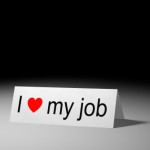 There are not too many people I know that would argue in favour of work over leisure time in the pursuit of happiness and peak experiences. In fact, it is during our leisure time that we expect to immerse ourselves in activities we enjoy and feel like we are in the zone (or flow). Flow, according to Mihály Csíkszentmihályi, is a state of full immersion in an activity that generates positive feelings, a sense of being energized, and complete focused motivation. Time and space seem to vanish as we fully ingage ourselves in an activity. Think of an artist who paints for hours on end without taking breaks for lunch or supper only to realize he is famished once he has completed his painting. Increased experiences of flow are associated with increases in happiness.
There are not too many people I know that would argue in favour of work over leisure time in the pursuit of happiness and peak experiences. In fact, it is during our leisure time that we expect to immerse ourselves in activities we enjoy and feel like we are in the zone (or flow). Flow, according to Mihály Csíkszentmihályi, is a state of full immersion in an activity that generates positive feelings, a sense of being energized, and complete focused motivation. Time and space seem to vanish as we fully ingage ourselves in an activity. Think of an artist who paints for hours on end without taking breaks for lunch or supper only to realize he is famished once he has completed his painting. Increased experiences of flow are associated with increases in happiness.
You may be surprised then to find that an article written by Mihály Csíkszentmihályi and Judith LeFevre called Optimal Experience in Work and Leisure produced counterintuitive findings suggesting that people actually have more flow experiences in the workplace. With decreases in job satisfaction and rising levels of stress resulting from high demands at the workplace, how can these results be explained? Furthermore, how can we use these results to increase our own experiences of flow at work, increase productivity and optimize our overall work experience?
Although at first glance the conclusions of the Csíkszentmihályi and LeFevre may seem a little far fetched, it’s worth looking into. After all, we spend more time at work than we do at home or engaged in our leisure activities. In this context, it becomes plausible that we experience flow in an area of our life that occupies most of our time. We will now examine a three step strategy that can help us be more aware of (and increase) our flow experience at work therefore increasing our job satisfaction as well as our productivity.
Identify what you enjoy about your work:
Every once in a while, we tend to forget (or neglect) the things about our job that we enjoy. This shift in awareness can be the result of stress at the workplace, at home, or any other source of stress. All we seem to focus on at those times is conflicts, obstacles, and the sense that we are not able to see a silver lining. It is during these times that it is important to take the time to re-shift your attention to the things you enjoy about your work. What was it that attracted you to that employment? What task are you good at? What tasks allow you to use your strengths? What tasks make you happy or produce flow experiences?
Develop a challenging objective:
Once you have identified your strenghts and aspects of your job that you enjoy, set a goal in that area of your job. If for example you work in human ressources and what you enjoy doing is training new employees, you can opt to revamp the training experience by researching and implementing innovative practices. Your goal (or objective) should not be something you consider easy but rather something challenging. Having a challenging goal that is in accordance with what you enjoy doing is a sure fire way of increasing job satifaction (or satisfaction in any other area of your life for that matter).
Act/Focus:
The next step involves action. Here you would allocate all your attention on the task/challenge at hand. In a mindful kind of way, try to avoid distractions and remain focused on what you are doing. By being fully aware of what you are engaged in, you are ridding yourself of any negative thoughts or preoccupations that may have been plaguing you. Furthermore, because you are being challenged by something you enjoy, you are actually increasing your job satisfaction and more likely to experience flow.
Try out this strategy and see how you can optimize your work experience while increasing your sense of well being. You might even surprise yourself (and your boss).
